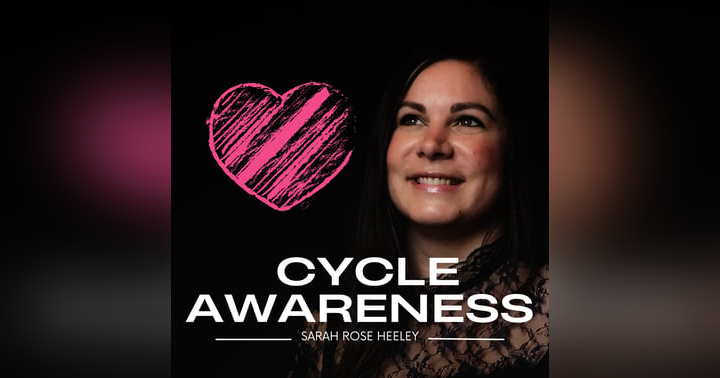How to Create a Realistic Budget that Works for You

This blog post expands on the key takeaways from our latest podcast episode, Money Matters: How to Take Control of Your Finances. In this episode, we explored practical strategies for creating and maintaining a budget that truly works for you, fostering a healthier relationship with your finances and paving the way for financial peace of mind. This post delves deeper into each step, offering actionable advice and insights to help you embark on your financial journey.
Why Budgeting Matters: Achieving Financial Peace of Mind
Many people shy away from budgeting, viewing it as restrictive and tedious. However, a well-crafted budget is not about deprivation; it's about empowerment. It's about gaining control over your financial life, making conscious choices about your spending, and working towards your financial goals. A budget allows you to understand where your money is going, identify areas where you can save, and plan for the future, whether it's buying a house, paying off debt, or simply having a comfortable financial cushion. The peace of mind that comes from knowing your financial situation is invaluable. It reduces stress and allows you to focus on other aspects of your life without the constant worry of money problems. Budgeting provides a roadmap to financial security and freedom, allowing you to confidently navigate unexpected expenses and life changes.
Understanding Your Spending Habits: The First Step to a Realistic Budget
Before you can create a budget, you need to understand your current spending habits. This involves meticulously tracking your expenses for at least a month. Use a budgeting app, a spreadsheet, or even a simple notebook to record every transaction, no matter how small. Categorize your expenses – housing, transportation, food, entertainment, etc. – to gain a clear picture of where your money is going. Be honest with yourself; don't gloss over those impulse purchases or subscription services you rarely use. This honest assessment is crucial for creating a budget that reflects your reality. Once you have a clear understanding of your spending patterns, you can identify areas where you can cut back or make more conscious choices.
Creating Your Personalized Spending Plan: A Step-by-Step Guide
Now that you understand your spending habits, you can start creating your personalized spending plan. This isn't a one-size-fits-all approach; your budget should reflect your unique circumstances, goals, and lifestyle. Start by listing your income – this includes your salary, any side hustles, and other sources of income. Next, list your essential expenses – these are the expenses you must pay each month, such as rent or mortgage, utilities, groceries, and transportation. Then, list your non-essential expenses – these are the expenses that are not strictly necessary but contribute to your quality of life, such as entertainment, dining out, and subscriptions. The key is to allocate funds for both essential and non-essential expenses in a way that aligns with your financial priorities and leaves room for savings. Consider using the 50/30/20 rule as a guideline: 50% of your income towards needs, 30% towards wants, and 20% towards savings and debt repayment. However, remember to adjust this rule to suit your unique financial situation.
Setting Realistic Goals
To make your budget effective, set realistic and achievable financial goals. Break down larger goals into smaller, manageable steps. For example, if your goal is to pay off debt, set a monthly payment target that's comfortable yet challenging. If you're saving for a down payment on a house, determine how much you need to save each month to reach your goal within a specific timeframe. Celebrate your progress along the way to stay motivated and on track.
Allocating Funds for Savings
Savings should be a priority in your budget, even if it's a small amount. Automate your savings by setting up automatic transfers from your checking account to your savings account. This takes the effort out of saving and ensures you consistently put money aside. Consider opening a high-yield savings account to maximize your returns. Remember, even small savings can accumulate over time and provide a safety net for emergencies or future opportunities.
Tracking Your Progress and Making Adjustments: Staying on Track with Your Budget
Creating a budget is only the first step; tracking your progress and making adjustments is crucial for long-term success. Regularly review your budget – at least once a month – to ensure you're staying on track. Compare your actual spending to your planned spending and identify any discrepancies. If you're overspending in certain areas, analyze why and make adjustments to your budget accordingly. Don't be discouraged if you slip up occasionally; it's part of the learning process. The key is to learn from your mistakes, make necessary adjustments, and stay committed to your financial goals.
The Mindset Shift: Embracing a Positive Relationship with Money
Budgeting is not just about numbers; it's also about mindset. Develop a positive relationship with money by viewing it as a tool to achieve your goals, not as a source of stress or anxiety. Practice gratitude for what you have and focus on abundance rather than scarcity. Challenge negative beliefs about money and replace them with positive affirmations. Remember that financial well-being is a journey, not a destination. There will be ups and downs, but maintaining a positive and proactive approach is key to long-term success. Celebrate your small victories and acknowledge your progress along the way.
Real-Life Success Stories: How Others Have Transformed Their Finances
Many individuals have successfully transformed their finances through mindful budgeting and a positive mindset shift. In our podcast episode, we shared inspiring stories from individuals who overcame financial challenges and achieved financial stability. These stories highlight the power of perseverance, the importance of seeking support, and the life-changing impact of taking control of your finances. These real-life examples demonstrate that creating a realistic budget is attainable for everyone, regardless of their starting point.
Resources and Support: Tools and Guidance for Your Financial Journey
Numerous resources are available to support you on your financial journey. Budgeting apps, online calculators, and financial literacy websites can provide valuable tools and guidance. Consider seeking professional advice from a financial advisor if you need personalized support. Connecting with others who share similar financial goals can also provide motivation and accountability. Remember, you don't have to navigate this journey alone.
Conclusion: Taking Control of Your Financial Future
Creating a realistic budget is a powerful step towards achieving financial peace of mind and taking control of your financial future. It's a journey that requires commitment, self-awareness, and a positive mindset. By understanding your spending habits, setting realistic goals, and tracking your progress, you can create a personalized spending plan that works for you. Remember to celebrate your successes along the way and seek support when needed. This blog post, in conjunction with our podcast episode, Money Matters: How to Take Control of Your Finances, provides a comprehensive framework for navigating your financial journey and achieving lasting financial well-being. Start today, and empower yourself to create a brighter financial future.
















